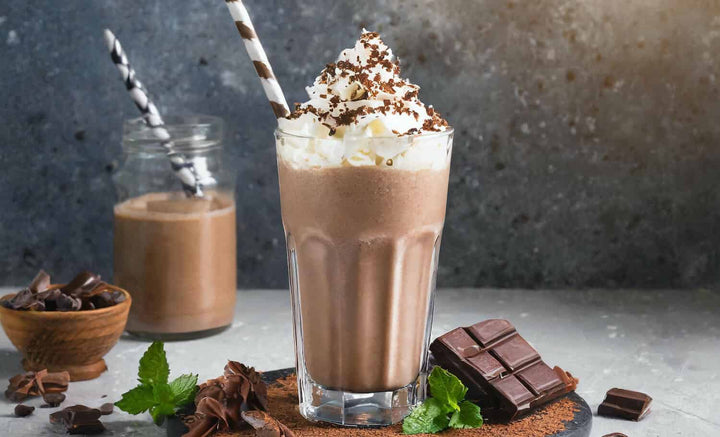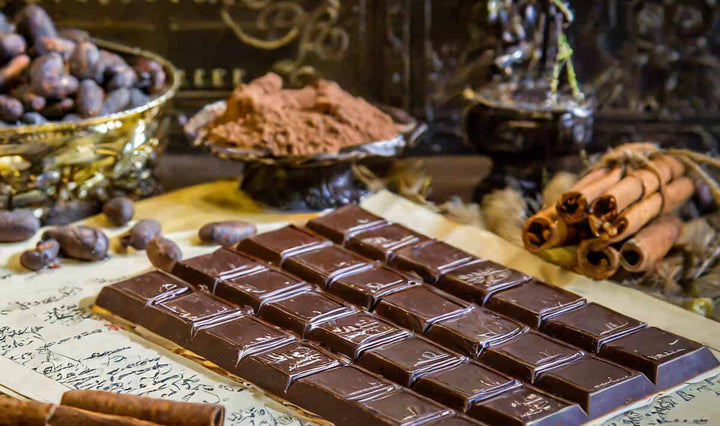From the comforting warmth of a mug of hot cocoa to the indulgent richness of a chocolate bar, cocoa-based products have long been beloved in the UK.
However, as health-conscious consumers explore alternatives, the term "cacao" has gained popularity, often leaving people confused about the difference between cocoa and cacao.
This article aims to demystify these two ingredients, exploring their origins, uses, and benefits.
What is the Difference Between Cocoa and Cacao?
Cacao refers to the raw, unprocessed form of chocolate, while cocoa is the term used for cacao that has been roasted at high temperatures.
This processing affects the nutrient content and flavour profile of the final product.
Related Post: What Is Cacao Paste?
Understanding Cacao
Cacao is derived from the seeds of the Theobroma cacao tree, native to South America.
These seeds, often called beans, are harvested from large pods that grow on the tree.
In their raw state, cacao beans are packed with nutrients, including antioxidants, magnesium, and iron.
The process of turning cacao beans into edible products begins with fermentation, followed by drying.
At this stage, the beans are considered raw cacao and can be sold whole, as nibs, or ground into cacao powder.
Raw cacao has a strong, bitter taste and is often used in small amounts in smoothies, energy bars, and raw desserts.
Related Post: Blog post about cacao here.
Exploring Cocoa
Cocoa, on the other hand, is what you get when cacao beans are roasted at high temperatures.
After roasting, the beans are ground and pressed to remove most of the fat (cocoa butter), leaving behind cocoa solids that are then pulverised into cocoa powder.
There are two main types of cocoa powder available in the UK market:
- Natural cocoa powder: This is simply roasted cocoa beans ground into a fine powder.
- Dutch-processed cocoa: This cocoa has been treated with an alkalising agent to reduce acidity, resulting in a milder flavour and darker colour.
Cocoa powder is a staple in British kitchens, used in everything from cakes and biscuits to hot chocolate.
Comparing Cacao and Cocoa
The main differences between cacao and cocoa lie in their processing, taste, and nutritional content:
Taste: Raw cacao has a more intense, bitter flavour compared to the milder taste of cocoa.
Texture: Cacao powder tends to be coarser than cocoa powder.
Nutrition: Raw cacao retains more of its original nutrients, as the roasting process used to make cocoa can reduce the antioxidant content.
Price and availability: In the UK, cocoa is generally more affordable and widely available than cacao products.
Culinary Applications
In British cuisine, cocoa is a versatile ingredient used in a variety of sweet treats.
It's essential in recipes like chocolate cake, brownies, and the classic mug of hot cocoa.
Cacao, with its more pronounced flavour, is often used in smaller quantities in raw food recipes, smoothie bowls, and as a topping for porridge.
For those looking to experiment, try substituting a small amount of cocoa with cacao in your favourite recipes.
A chocolate mousse made with part cocoa and part cacao can offer a complex flavour profile that might surprise your taste buds.
Related Post: Can a diabetic eat chocolate?
Health Considerations
While both cacao and cocoa offer health benefits, raw cacao is often touted as the more nutritious option.
It's rich in flavonoids, which have antioxidant properties, and contains minerals like magnesium and iron.
However, it's worth noting that cocoa still retains many of these benefits, just in slightly lower quantities.
Both cacao and cocoa contain caffeine and theobromine, stimulants that can affect sleep and anxiety levels in some individuals.
As with any food, moderation is key.
Related Post: What is cacao butter?
Sustainability and Ethical Sourcing
As UK consumers become more conscious of their food choices, it's important to consider the sourcing of cacao and cocoa products.
Look for fair trade and organic options, which support sustainable farming practices and ensure fair wages for farmers.
Many UK supermarkets now offer ethically sourced cocoa and cacao products.
Related Post: What are cacao nibs?
Final Notes on the Difference Between Cacao and Cocoa?
While cocoa and cacao start from the same source, their processing and end uses can be quite different.
Cocoa, with its milder flavour and versatility, remains a staple in British baking.
Cacao, with its raw food credentials and intense taste, offers an alternative for those looking to experiment or seeking potential added health benefits.
Whether you're whipping up a traditional chocolate sponge with cocoa or sprinkling raw cacao nibs on your morning porridge, understanding the differences between these two ingredients can help you make informed choices in your culinary adventures.
So next time you're in the baking aisle of your local supermarket, you'll know exactly which chocolate-derived powder to reach for.
Related Post: What is a Cacao Ceremony?












